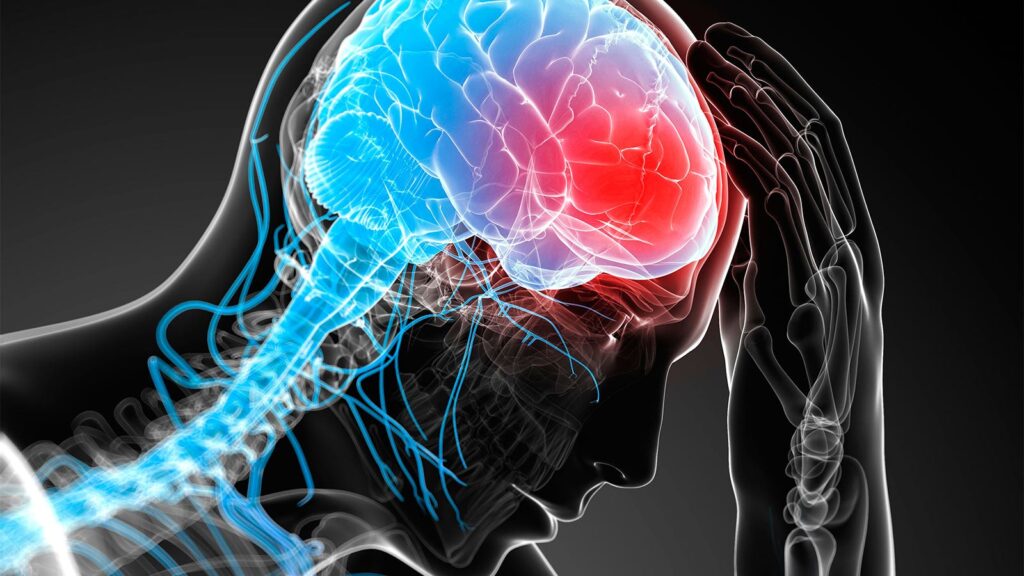- Headache diagnoses were associated with an increase in attempted and completed suicide.
- The study followed more than 100,000 headache patients in Denmark.
- Post-traumatic headache and trigeminal autonomic cephalalgia had strong relationships with suicide risk.
Headache diagnoses were persistently associated with an increase in attempted and completed suicides, a population study of more than 100,000 headache patients in Denmark showed.
Across four types of headache — migraine, tension-type headache, post-traumatic headache, and trigeminal autonomic cephalalgia — the association was robust, said Holly Elser, MD, PhD, of the University of Pennsylvania in Philadelphia, and colleagues.
The hazard of attempted suicide was twice as high among people diagnosed with headache (HR 2.04, 95% CI 1.84-2.27) versus a matched group of people without a headache diagnosis, Elser and co-authors reported in JAMA Neurology. The hazard of completed suicide was 40% higher (HR 1.40, 95% CI 1.17-1.68).
The 15-year absolute risk of attempted suicide among people diagnosed with headache was 0.78% versus 0.33% compared with the matched group (risk difference 0.45%, 95% CI 0.39%-0.53%). The absolute risk of completed suicide over 15 years was 0.21% versus 0.15% (risk difference 0.06%, 95% CI 0.02%-0.10%).
Findings were adjusted for age, sex, year, education, income, baseline comorbidities, and accounted for competing risk of death.
Associations were especially strong for trigeminal autonomic cephalalgia and post-traumatic headache. However, the analysis revealed a persistent association with suicide across all four headache disorders, including tension-type headache — a highly prevalent primary headache disorder that typically has mild-to-moderate intensity — “suggesting that even patients with milder headaches may experience elevated suicide risk,” the researchers noted.
“The results of this study show that, while rare, attempted and completed suicide occurs more frequently in patients diagnosed with headache than members of the general population without headache,” Elser said.
“These results underscore the potential importance of screening and early recognition of depressive symptoms and suicidality in patients diagnosed with headache,” she told MedPage Today.
Previous studies have suggested that pain severity might in part account for an increased risk of suicide attempt associated with migraine. Cluster headache, a type of trigeminal autonomic cephalalgia, is often called a “suicide headache” due to its severity; one survey showed 55% of cluster headache patients have suicidal ideations.
Elser and colleagues studied 119,486 Danish citizens ages 15 and older who were diagnosed with headache from 1995 to 2020, matching them by sex and birth year to 597,430 people without headache diagnosis. The median age was 40.1 years, and women made up 69.5% of both groups.
The researchers identified first-time headache diagnoses from inpatient hospitalizations, emergency department visits, and outpatient specialty clinic visits using ICD-10 codes. ICD-10 codes also were used to identify attempted and completed suicides in Danish registers.
Registry records showed 603 attempted suicides (0.5%) and 156 completed suicides (0.1%) among people with headache. Medical and psychiatric comorbidities were more prevalent among people diagnosed with headache than the matched group. People diagnosed with headache also were more likely to be treated with an antidepressant or an opioid.
The study had several limitations, the researchers acknowledged. Because it used diagnosis codes to identify headache disorders, attempted suicide, and completed suicide, misclassification was possible.
Using diagnosis codes also precluded the researchers from assessing how headache chronicity, severity, and response to treatment might influence the association with attempted or completed suicide, Elser and co-authors noted. “Headache severity and chronicity may be important modifiers of the association of headache with attempted and completed suicide,” they wrote.
In addition, people diagnosed in the hospital, emergency department, and outpatient specialty clinics may have more severe headache than those in general practice.
-
Judy George covers neurology and neuroscience news for MedPage Today, writing about brain aging, Alzheimer’s, dementia, MS, rare diseases, epilepsy, autism, headache, stroke, Parkinson’s, ALS, concussion, CTE, sleep, pain, and more. Follow
Disclosures
Elser is an editorial fellow for JAMA Neurology. Co-authors reported receiving research grants from private and public institutions to their university.
Primary Source
JAMA Neurology
Source Reference: Elser H, et al “Risk of attempted and completed suicide in persons diagnosed with headache” JAMA Neurol 2025; DOI: 10.1001/jamaneurol.2024.4974.
Please enable JavaScript to view the

